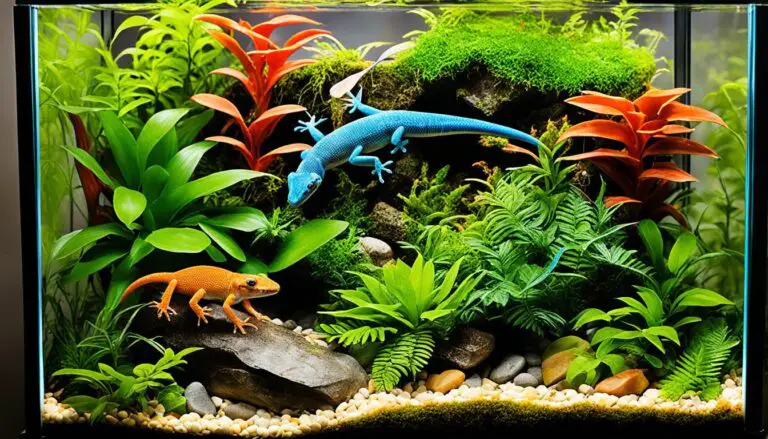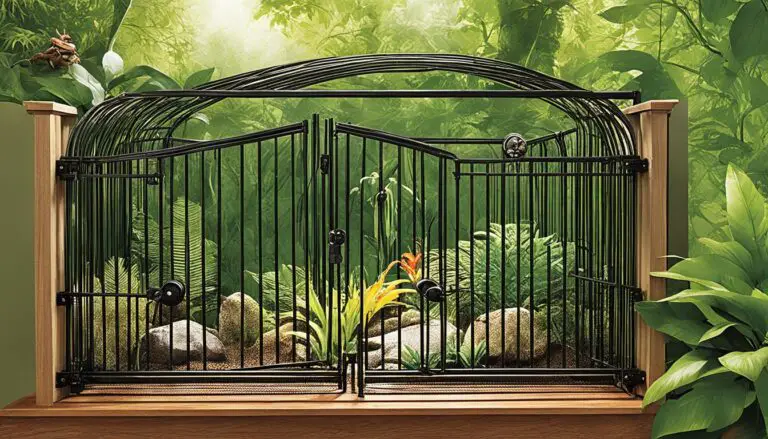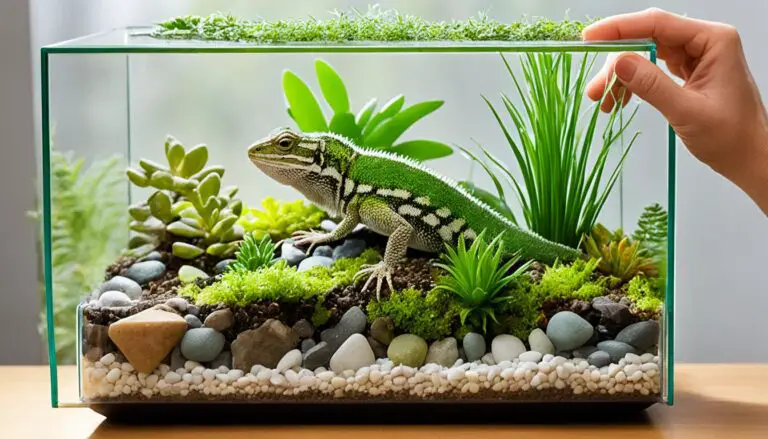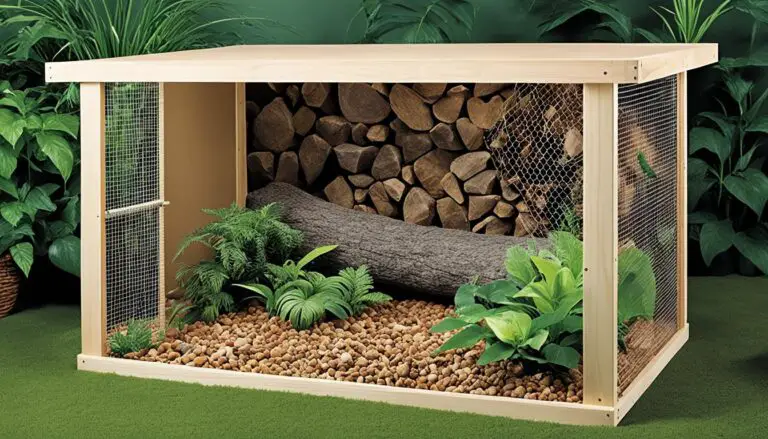Exotic Pet Housing Thermometers: Quick Guide & Tips
For your exotic pet’s perfect home warmth, a suitable thermometer is key. This applies to reptiles, amphibians, or fish owners. Thermometers come as dial, LCD self-adhesive, digital, infrared, and mercury types.
Digital thermometers top the list for air temperature accuracy in exotic pet homes.
The Importance of Having a Thermometer in the Vivarium
Keeping the right temperature in your pet’s home is key to their health. Since reptiles and amphibians depend on external heat to stay warm, a thermometer is essential. It helps you keep the temperature just right, supporting your pet’s digestion, movement, and health.
For exotic pets, controlling temperature accurately is critical. A quality reptile thermometer lets you ensure the vivarium is at the ideal warmth. This way, your pets get the best conditions to thrive in.
“The ability to monitor temperature allows for adjustments to be made promptly, ensuring that your reptiles are not subjected to potentially harmful temperature extremes.” – Dr. Emily Anderson, Herpetologist
Regular checks on the vivarium’s temperature keep it in the right range for your pets. Each exotic pet species needs a specific temperature to stay healthy. This affects their metabolism, immune system, and behavior.
Without a thermometer, knowing the exact temperature is tough. Room temperatures change, but what matters is the heat inside the enclosure. A reptile thermometer helps keep the vivarium’s temperature stable, no matter what.
Having a thermometer means you can adjust the heat as needed. If it’s too cold, you might add more heat sources like lamps. If it’s too hot, cooling down the enclosure with fans or less heating might help.
A thermometer is a must-have for keeping your exotic pets in perfect health. By choosing a top-notch reptile thermometer and checking the temperature often, you create a cozy and safe space for your pets.
Where to Put the Thermometer
Putting the thermometer in the right spot is crucial for checking the vivarium’s temperature accurately. Different animals need the thermometer placed in various spots, based on their heat needs. For example, tree-dwelling reptiles need it at different heights.
Animals that live on the ground need it where they hang out the most. And, if your pet loves to bask, put a thermometer under the heat source. This helps maintain the right temperature gradient for them.
Keeping an eye on the temperature is key for your exotic pet’s health. By placing the thermometer correctly, you can make sure they live in the perfect warmth. Knowing what your pets need and setting the thermometer right keeps them happy and healthy.
Thermometer Placement Guidelines
- For arboreal animals, place the thermometer at different heights within the enclosure to measure vertical temperature variations.
- For terrestrial animals, position the thermometer at the level where they spend the most time, ensuring accurate readings.
- Ensure that animals requiring a basking spot have a thermometer placed directly beneath the heat source to monitor the temperature gradient effectively.
Choosing the right spots for the thermometer lets you keep the perfect temperature for your exotic pets. This control is key for their health, like digestion and metabolism. It makes them comfy, too.
“Proper thermometer placement is essential for accurately monitoring the temperature gradient in your pet’s enclosure.” – ReptileExpert.com
Each species needs specific temperatures, so finding out what your pets need is crucial. With the right thermometer setup, you create a cozy home for them. This keeps them stress-free and loved.
| Thermometer Model | Features |
|---|---|
| Lucky Reptile Thermometer Deluxe | Electronic thermometer with two external sensors for temperature measurement in two different spots. |
| White Python Digital Max/Min Thermometer | Modern digital thermometer with maximum and minimum temperature reading capability. |
| ZooMed Digital Terrarium Thermometer | Features a remote sensor for accurate temperature readings in the vivarium. |
| Lucky Reptile Thermometer-Hygro Deluxe Pro | Excellent choice for constant, accurate monitoring of temperature and humidity in the vivarium. |
| White Python Digital Thermo/Hygrometer | Cost-effective option for measuring temperature and humidity in your vivarium. |
How to Choose the Right Thermometer for Your Vivarium
Choosing the right thermometer for your vivarium is crucial. Accuracy is the most important factor. That’s why a digital terrarium thermometer is often recommended. They give precise readings, helping you maintain the perfect environment for your pets.
Digital thermometers have electronic probes. These probes go right into the vivarium for spot-on temperature readings. Besides, some can also check humidity levels. This feature is perfect for pets needing certain moisture levels.
Think about what you need before picking a digital thermometer. If your vivarium is big or you’re watching temperatures in different spots, get one with multiple probes. It helps you monitor temperature changes in all areas of the enclosure.
If controlling moisture is your main concern, consider a thermometer that also measures humidity. It’s perfect for pets that need exact humidity levels to thrive.
Comparison of Different Types of Digital Thermometers
| Type | Features | Recommended Brands |
|---|---|---|
| Digital Terrarium Thermometer | – Accurate temperature measurement – Some models measure humidity |
ZooMed, Lucky Reptile |
| Combined Thermometer/Hygrometer | – Measures both temperature and humidity – Ideal for species with specific humidity requirements |
Lucky Reptile, White Python |
| Thermometer with Multiple Probes | – Allows monitoring temperature in different areas – Perfect for larger vivariums |
Lucky Reptile |
When picking a thermometer for your vivarium, focus on getting accurate readings and assess your needs. The right thermometer will help you keep your exotic pets healthy and happy.

Probe Placement for Thermometers and Hygrometers
It’s very important to place the probe correctly for accurate reading in your vivarium. For thermometers, the digital temperature gauge probe should be in areas you’re focusing on. You might place it under the basking spot, at the cool end, or near a warm hide. This depends on what your exotic pet needs. By keeping an eye on these spots, you help ensure a comfy temperature for your pet.
Hygrometers need careful placement too. You should put the probe where it can best monitor the humidity. This could be in general areas or inside a moist hide. Doing this helps you keep the right moisture levels. Then, you can adjust as needed for your pet’s health.
To understand how vital proper placement is, here’s an example:
Imagine you have a bearded dragon that needs a certain temperature to bask in. You’d place the thermometer probe right under the heat spot. This lets you check the basking area’s temperature, keeping it just right for your pet’s health.
The same goes for hygrometers as well. Say you have a crested gecko that likes a certain level of humidity. Placing the hygrometer probe inside their moist hide gets you an accurate humidity reading. This way, your pet feels at home.
By placing probes smartly for both temperature and humidity, you can make sure your vivarium is ideal. This creates a perfect living space for your exotic pet.
Recommended Probe Placement for Thermometers and Hygrometers
| Species | Thermometer Probe Placement | Hygrometer Probe Placement |
|---|---|---|
| Bearded Dragon | Basking spot | N/A |
| Ball Python | Cool end | N/A |
| Crested Gecko | N/A | Moist hide |
Remember, getting the probe placement right is crucial. By doing so, you make sure your vivarium matches the natural needs of your pet. Follow these tips to maintain the right temperature and humidity levels.
Probe Placement for Thermostats and Humidistats
Thermostats and humidistats are key in keeping the right temperature and humidity for exotic pets. It’s vital to place the probes correctly for your pet’s home to be ideal.
For thermostats in remote monitoring exotic pet enclosures, put the probe where your reptile hangs out. This controls the temperature right where your pet needs it, like the basking surface, ambient area, or warm hide. This way, the temperature stays just right, making a comfy and safe place for your pet.
With humidistats, where you place the probe is very important to watch and change humidity levels. Usually, put the probe in the middle of the enclosure for a good humidity reading. If your pet needs certain humidity, put the probe in a moist hide. This helps the humidistat keep the humidity right for your pet.
Advantages of Probe Placement for Thermostats and Humidistats
Putting probes correctly for thermostats and humidistats has many benefits:
- Accurate Control: The right probe placement lets these devices control temperature and humidity precisely.
- Pet Comfort: Getting the temperature and humidity right is key for your pet’s well-being. Proper probe placement does this.
- Preventative Measures: These devices can stop health issues by keeping the environment right.
- Efficient Energy Usage: Correctly placed probes make sure the thermostat only works when needed.
Always check the accuracy of your thermostats and humidistats for dependable control of temperature and humidity.
Knowing how important probe placement is, you can now make the perfect home for your exotic pet.

| Advantages | Exotic Pet Housing | Benefits |
|---|---|---|
| Accurate Control | Allows precise regulation of temperature and humidity levels in exotic pet enclosures. | Provides a comfortable environment for exotic pets and helps prevent health issues. |
| Pet Comfort | Enables thermoregulation, vital for overall well-being. | Ensures optimal environmental conditions for exotic pets’ comfort and health. |
| Preventative Measures | Monitoring and adjusting temperature and humidity to prevent health issues. | Reduces the risk of health problems resulting from inadequate environmental conditions. |
| Efficient Energy Usage | Activates heating or cooling elements only when necessary. | Optimizes energy usage and reduces cost. |
Best Vivarium Thermometers
To help you pick the right thermometer for your vivarium, we have some top choices:
Lucky Reptile Thermometer Deluxe
The Lucky Reptile Thermometer Deluxe is a modern electronic device. It comes with two sensors for checking temperature in distinct areas. This ensures your exotic pet’s home is always at the right temperature.
White Python Digital Max/Min Thermometer
The White Python Digital Max/Min Thermometer gives you the high and low temperatures. Its precise readings are key for keeping your pet’s space ideal.
ZooMed Digital Terrarium Thermometer
The ZooMed Digital Terrarium Thermometer has a remote sensor. It lets you adjust your vivarium’s temperature easily. This ensures your pet stays comfy.
Lucky Reptile Thermometer-Hygro Deluxe Pro
For accurate temperature and humidity checks, choose the Lucky Reptile Thermometer-Hygro Deluxe Pro. It keeps your pet’s home just right, promoting their health.
White Python Digital Thermo/Hygrometer
The White Python Digital Thermo/Hygrometer is great for checking both temperature and humidity. It’s precise and affordable, letting you create the best home for your pet.
These thermometers are made to keep your exotic pet’s home perfect. Pick the one that fits your needs best, and give your pet a cozy, healthy space.
Conclusion
Keeping the right temperature for your exotic pet’s home is very important. It helps them stay healthy and happy. A thermometer can really help you keep the perfect conditions for your pets. By getting a good thermometer and putting it in the right spot, you can watch and keep the temperature just right.
Don’t forget to regularly check and calibrate your thermometer. This ensures it gives true readings. Doing this lets you adjust the environment so it’s best for your pets.
If you have a reptile, amphibian, or fish, finding a good thermometer is key. There are different kinds, like digital ones or smart sensors, that can fit your needs. Brands like Lucky Reptile and ZooMed have great options that can measure different temperatures and even come with remote sensors.
With the perfect thermometer, you can make a home for your pets that feels like their natural world. They’ll do well in a place where the temperature is just right. So, it’s smart to get a reptile tank thermometer or pet temperature monitor as soon as you can.
FAQ
Why is it important to have a thermometer in the vivarium?
Where should I place the thermometer in the vivarium?
How do I choose the right thermometer for my vivarium?
Where should I place the probes for thermometers and hygrometers?
How should I place the probes for thermostats and humidistats?
What are some recommended vivarium thermometers?
Source Links
- https://www.thebiodude.com/blogs/how-do-i-create-a-bioactive-vivarium/how-to-place-thermometer-and-hygrometer-probes
- https://exo-terra.com/products/care/monitoring/terrarium-thermometer/
- https://www.evolutionreptiles.co.uk/blog/vivarium-thermometer/
Peter Stones is the founder of Exotic Pets Place, the leading online resource for exotic pet care information.
With over 10 years of hands-on exotic pet ownership experience, he is deeply passionate about sharing his expertise to help others properly care for their unusual pets.
When he's not writing extensively researched articles or connecting with fellow exotic pet enthusiasts worldwide, you can find Peter at home tending to his own beloved menagerie of exotic animals.

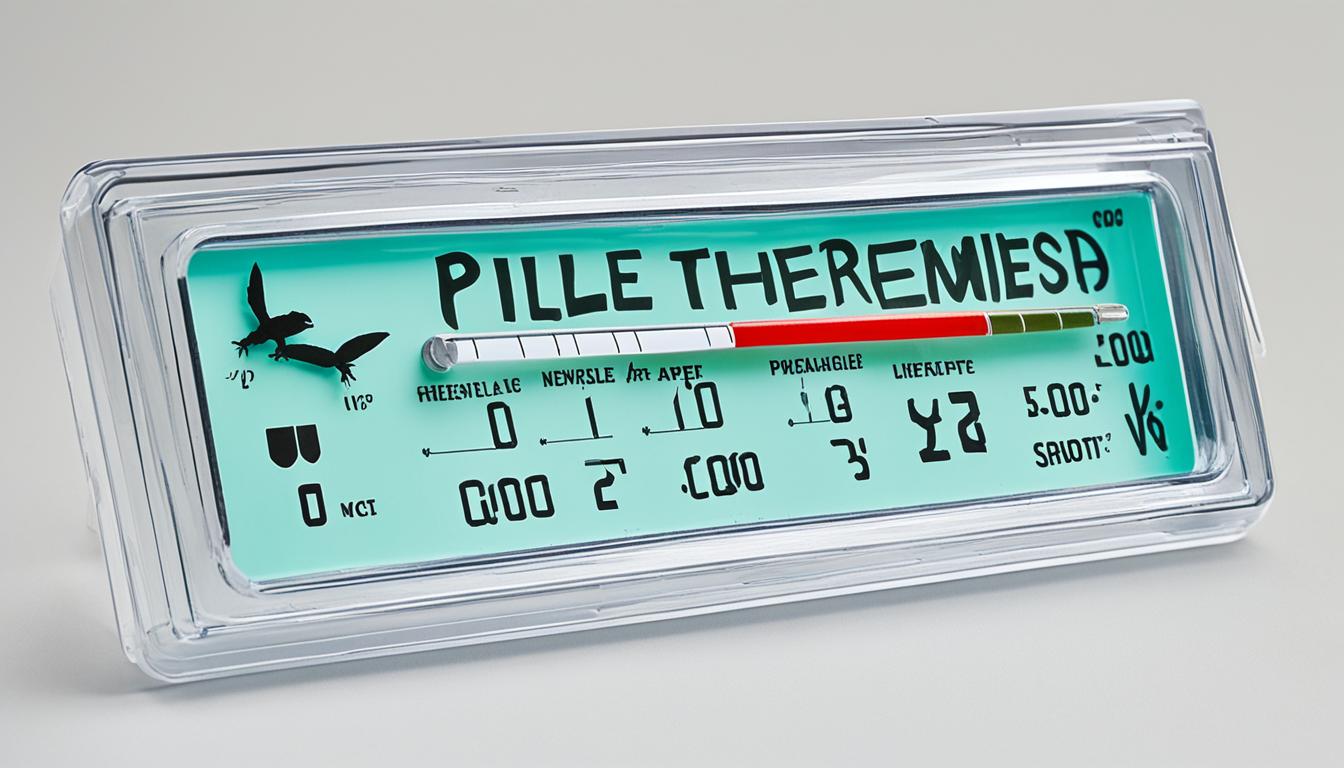
![How to Create a Safe Outdoor Space for Your Exotic Pet [Guide]](https://exoticpetsplace.com/wp-content/uploads/2023/06/How-to-Create-a-Safe-Outdoor-Space-for-Your-Exotic-Pet-Guide-wood-house-with-a-porch-768x512.jpg)
